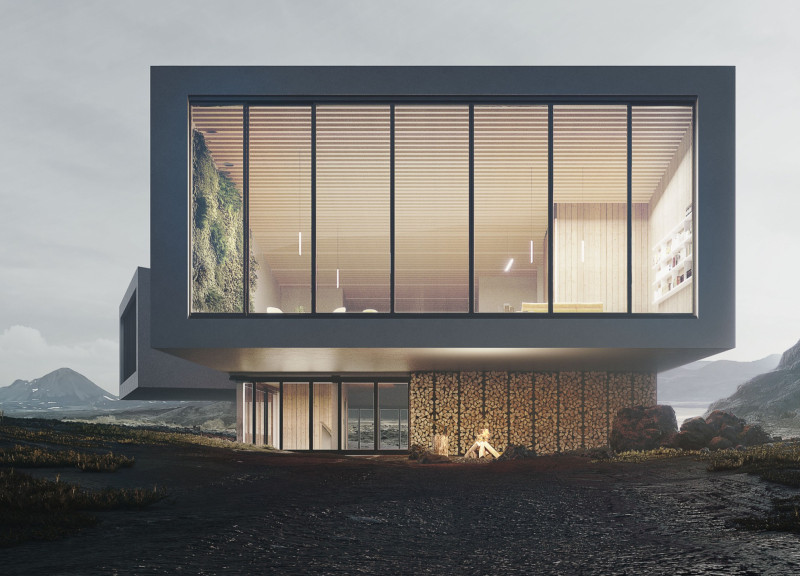5 key facts about this project
The design near Hverfjall volcano focuses on creating a strong connection between visitors and the surrounding landscape. The project is built as a journey, with The Path acting as the main feature that links outdoor trails to the spaces within. This approach enhances visitor interaction with the environment and highlights the geographical importance of the Hverfjall volcano, framing each experience within the beauty of nature.
The Path
-
The Path encourages exploration and thoughtfulness. It invites users to extend their outdoor trekking experiences inside the building. This design promotes a direct relationship with the landscape, fostering a sense of discovery. The building's orientation towards both the volcano and natural light not only maximizes views but also makes efficient use of available energy.
Functional Spaces
-
The structure includes various functional spaces designed for visitor comfort. Changing rooms, lockers, and outdoor shelters address practical needs, making the experience more enjoyable. The coffee shop stands out with its large glass facade, offering panoramic views of the volcano. This design feature not only enhances the user experience but also connects the indoor space with the impressive natural landscape outside.
Materiality
-
The choice of materials is essential to the project's design. Geopolymers, specifically volcanic tuff, are used for their environmental benefits. They require less energy to produce and emit less CO2. In addition, perovskite photovoltaic cells are integrated into the building, providing energy-efficient solutions without compromising the overall aesthetic.
Exhibition Integration
-
The museum floor extends The Path, incorporating various types of ground and Icelandic rocks that connect with the exhibition's themes. This integration strengthens the relationship between the built environment and its natural context. By emphasizing local geology, the design encourages users to engage with the cultural significance of the area, adding depth to the visitor experience.
The roof is angled to follow the slope of the volcano, allowing the building to blend into its surroundings. This detail not only enhances the visual connection with the landscape but also contributes to the building’s thermal performance. It roots the design firmly in its unique geographic setting while serving practical functions.






















































